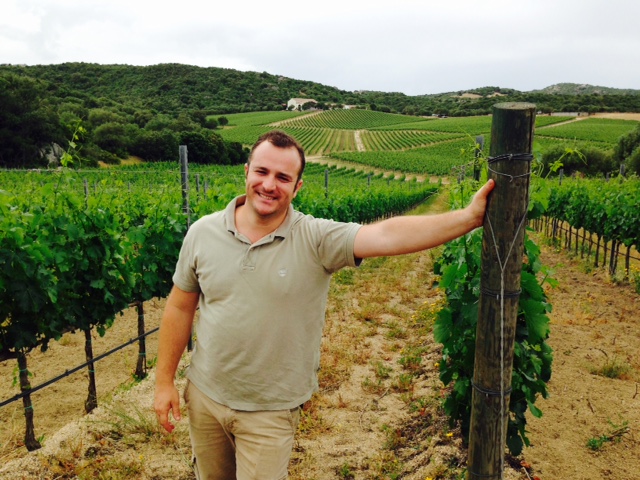Capichera
HISTORY – SARDINIA
Sardinia has an ancient and important history of wine making. The island’s central position in the western Mediterranean has enabled it to play a leading role in colonial expansion and trade since the times of ancient Mycaena. The Pheonicians, the Greeks and the Romans were responsible for the spread of viticulture and introduced new grape varieties, which are still grown on the island today.
Recent historical, archaeological and geological research has drawn the conclusion that the “mythical” Atlantis was in fact Sardinia. Villages dating back to over 4,000 years ago have been discovered including stone huts where grapes were crushed for making “holy drinks”, most probably wine.
Background
The Capichera winery began its story over 30 years ago in the northern part of Sardinia, known as Gallura, opposite the island of Corsica. The lands of the Capichera estate, owned by the family since the 19th century, were famous in the small community of Arzachena for the quality of the grapes and the wines they produced.
Vermentino, the traditional local variety, was used to make well-structured wines using small chestnut barrels. In the mid-1970s the Ragnedda family planted new Vermentino vines and built a new winery for the production of fine wines. Over the years the Ragnedda brothers have invested a great deal of energy in making Capichera a leading winery which produces fine quality wines.
Capichera is also accredited with the winemaking renaissance and revolution that has taken place in Sardinia. Capichera’s ideas, projects and results have had – and still have – considerable influence on Sardinian winemaking, the creation of new, good quality wineries and the improvement of quality in others, none of which would have happened without the stimulus of the prior experiences of a local wine producers, especially Capichera.
Capichera believes in the fruit of their passion for wine and the land, without mediation and without seeking help from international grape varieties. In fact, in difficult and unfavourable vintage years we have even chosen not to make wines (eg. Vendemmia Tardiva 2002).
Capichera is the only Sardinian winery to have voluntarily left the DOCG because it allows the use of different grape varieties in the blend. We have always firmly believed that Sardinian grape varieties, used without blending, can produce great prestigious wines with definite typical features provided by the grape variety and the terroir.
The WINES
In 1980, Capichera sold their first bottle with the Capichera label: a monovarietal Vermentino which differed greatly from the white wines available at the time – richer, more stylish, with greater aging possibilities, outstandingly typical with the aromas of the terroir. Italy’s top wine journalist Luigi Veronelli defined it as “a Mediterranean Montrachet”.
In 1990, after three years of small-batch fermentation, they made the world’s first Vermentino fermented and aged entirely in barriques – “Capichera Vendemmia Tardiva”.
Well-known journalist Robert Parker recently described this wine as “the best Italian white wine made from native grape varieties and the best Vermentino in the world”. The 1990 vintage was recently presented in London where, with great satisfaction, we demonstrated its incredible ability to age well without losing any of its fine qualities, which is typical of great wines.
In the Nineties, Capichera purchased old vineyards planted with Carignano, a native grape variety, and made our first red, Assaje, fermented in stainless steel vats. Assaje also shares the qualities and features already found in their whites: elegance, structure and typicality. In 2001, they built a new winery and began making another red, the Mantènghja, another monovarietal Carignano, fermented in French oak barriques for 18-24 months.
Currently, Capichera’s 50 hectare-estate, planted with Vermentino and Carignano, produces about 340,000 bottles per year, 60% of which are white and 40% red.
PHILOSOPHY – NATIVE GRAPE VARIETIES
Vermentino (white) and Carignano (black) are native local grape varieties, which have been grown in Sardinia for many centuries. Carignano was introduced by the Phoenicians. In present day, Carignano is found in all the winemaking areas of the western Mediterranean. Vermentino is also grown in Liguria and Tuscany but the granitic soil of Gallura (northern Sardinia) is its ideal habitat.
The winery’s philosophy today is the same initial idea that inspired the Ragnedda family’s imagination back in the Seventies: making great wines of international standard exclusively from native local Sardinian varieties, unblended, without the use of international grape varieties.
This concept may not seem so unusual today because many Italian winemaking areas have now begun to make wines from native grapes. But 20 or 30 years ago, the presentation of a monovarietal Vermentino without the addition of Chardonnay or Sauvignon or other international varieties was a considerable and innovative challenge.
Capichera still tends to avoid trends and market fluctuations, remaining convinced that the promotion of native grape varieties like Vermentino and Carignano is the way to make prestigious wines that are unique in the world.











